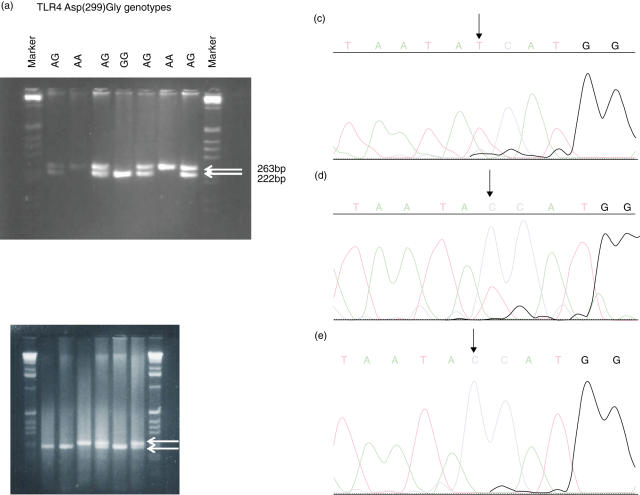Fig. 1.
(a) Detection of the 896 A/G polymorphism in the TLR4 gene. (Left) Genomic DNA of osteomyelitis (OM) patients was amplified and PCR products were digested with the enzyme NcoI. The agarose gel shows the RFLP of the 299 section of the TLR4 gene from wild-type, heterozygous, and homozygous OM patients. (c–e) Sequencing of the RFLP. Upon sequencing the sample in (c) was homozygous for alanine at position 896 (wild type), the sample in (d) was identified as heterozygous with both an alanine and a guanine at position 896 (heterozygous), and the sample in (e) was homozygous for a guanine at position 896 (homozygous with the mutation). (b) Detection of the Thr399Ile polymorphism in the TLR4 gene. Genomic DNA of OM patients was amplified and PCR products were digested with the enzyme MspI. The agarose gel shows the RFLP of the 399 section of the TLR4 gene from wild-type, heterozygous, and homozygous OM patients.

